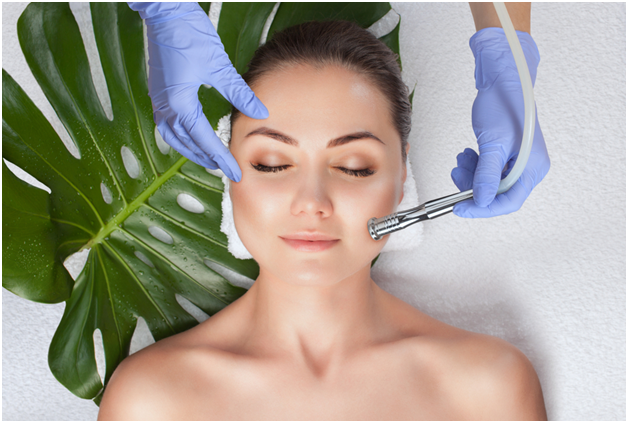Introduction
The use of microdermabrasion techniques is renowned for its ability to heal the skin and improve its appearance, which results in it being smoother, healthier, or brighter. For anyone considering this less invasive procedure, it is essential to understand how microdermabrasion heals and what treatments are used.
Microdermabrasion Treatment Procedures
Microdermabrasion is an exfoliation of the outermost layer of the skin. Crystal and diamond-tip microdermabrasion are two of the most common procedures.
- Crystal Microdermabrasion: Fine crystals are removed from the skin’s surface by a handpiece during this procedure. These crystals, along with the dead skin cells they collect, are simultaneously suctioned away.
- DiamondTip microdermabrasion: A handpiece is used for diamond-tip microdermabrasion, which uses an abrasive diamond tip to microdermatize and heal the outer layer of skin.
The removal of dead cells, promotion of collagen synthesis, and improvement in texture and tone are the aims of both procedures.
Also Read: Microdermabrasion: An Effective Skin Resurfacing Cosmetic Procedure
The Microdermabrasion Healing Process
- Immediate Post-Treatment: After your microdermabrasion session, your skin might appear slightly red and feel tight, similar to mild sunburn. It’s just a short time and should go away in a couple of hours.
- Increasing sensitivity: If you get exposed to the sun, this will affect your skin’s ability to protect itself from further irritation. You must use sunblock and avoid direct sunlight. In the days that follow your treatment, good skin care is important.
- Flaking and Peeling: You may feel a faint flaking or peeling of your skin in a few days. It’s a natural part of the healing process as your skin rids itself of dead cells, revealing new healthy layers beneath it.
- Time of recovery: The majority of patients may return to regular activities as soon as treatment has been completed. But for a few days, it is advisable not to engage in vigorous physical activity or sauna.
- Longterm Benefits: Microdermabrasion’s healing process typically lasts about one week, with optimal results appearing weeks after the procedure. Depending on your skincare goals, a sustained improvement can be seen over several sessions.
Benefits of Microdermabrasion
- Improved skin texture: Microdermabrasion can help to decrease the appearance of fine lines, wrinkles, and acne scars that will leave your skin smoother and more even.
- Even the skin tone: It’s also capable of reducing sunspots, hyperpigmentation, and other skin imperfections that can make you look more youthful and radiant.
- Boosting collagen production: Microdermabrasion is a mechanism that helps maintain skin elasticity and firmness by stimulating the growth of collagen.
Conclusion
Microdermabrasion for skin rejuvenation is one of the most widely used and efficient cosmetic procedures. To understand the microdermabrasion healing process and microdermabrasion treatment procedures, it is necessary for any person who considers this treatment. You’ll see improvement in texture, tone, and overall health as the skin heals and regenerates. Microdermabrasion is a suitable and easy option to enhance the skin’s appearance if you are seeking a noninvasive treatment that will not harm the skin. But before undergoing the procedure, prior to consulting with a licensed skin care expert, you are advised to consult him on your particular requirements and expectations.
Also Read: Understanding Microdermabrasion as a Skin Resurfacing Treatment

